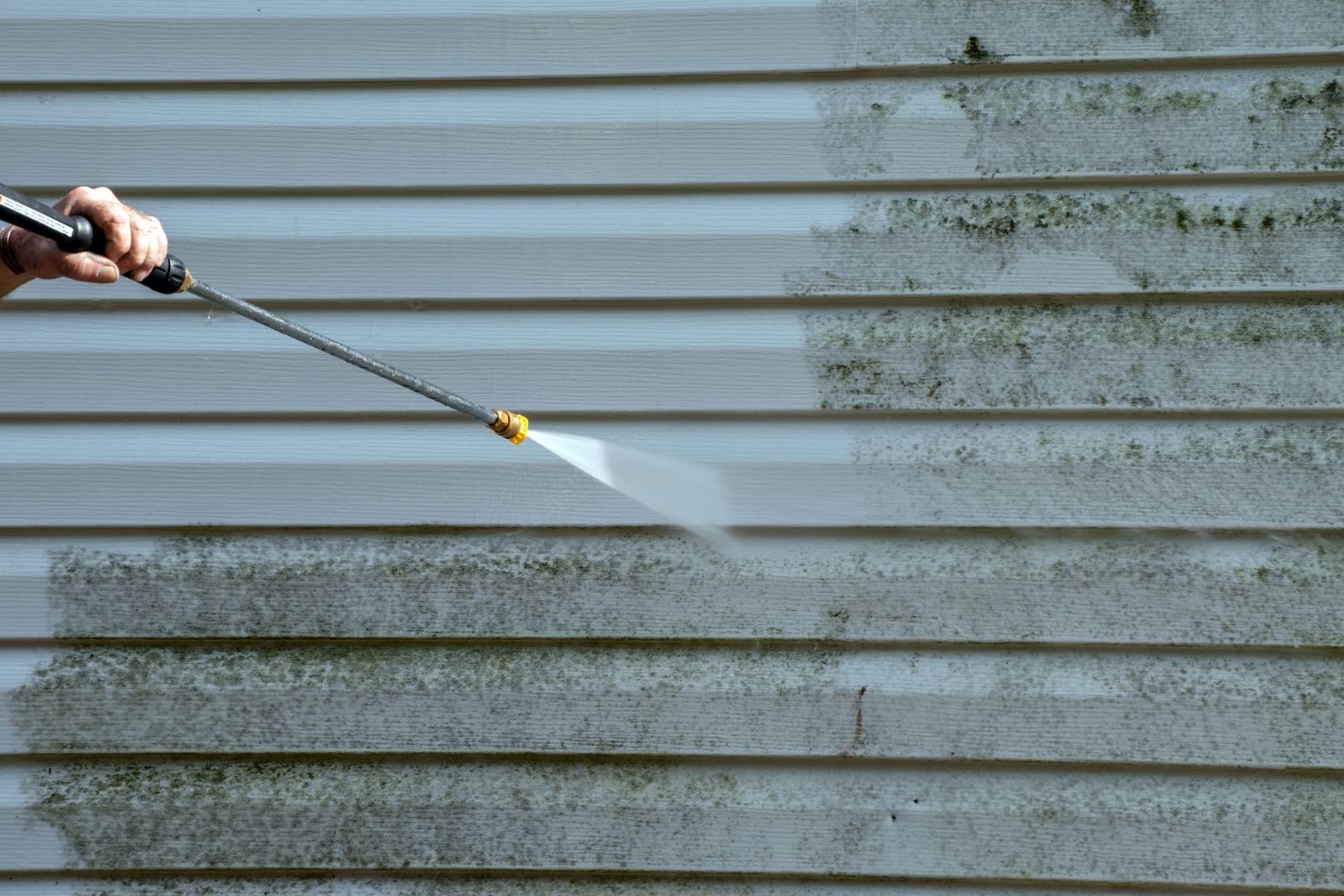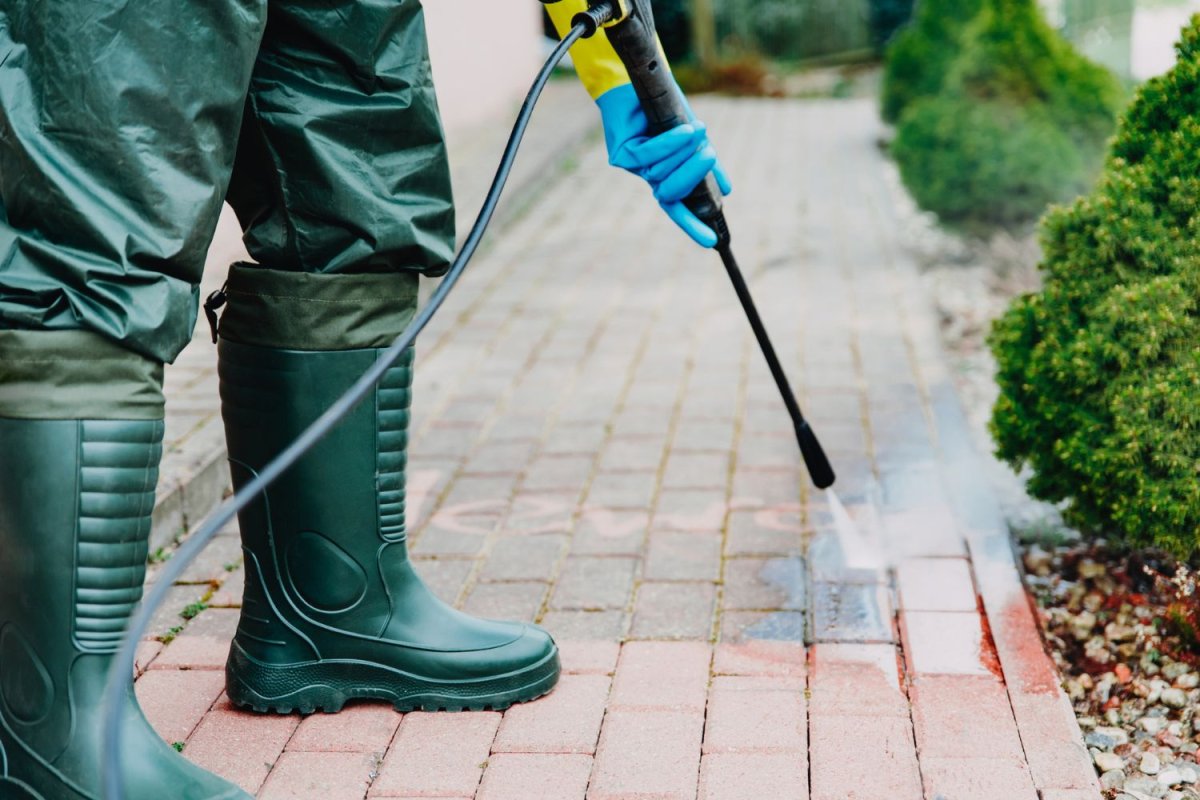We may earn revenue from the products available on this page and participate in affiliate programs. Learn More ›
Q: I’d like to get a head start on cleaning the exterior of my home, but my pressure washer won’t start. How do I find out what’s causing the issue? Should I get a new one?
A: If it’s time to embark on some seasonal cleaning and your pressure washer won’t start, it can put a damper on your day—and your to-do list. Your machine’s inability to start could result from any number of issues, including stale gasoline, a faulty outlet, or clogged parts. This guide will help you troubleshoot your power washer, and get it started up again—and save you the cost of buying a new power washer.
For electric pressure washers, ensure the outlets are working and the circuit is powerful enough.
When an electric pressure won’t turn on, the root of the problem is most likely power related. To determine what’s causing the power outage, it helps to first plug the power cord into multiple outlets to rule out a faulty one. If the power washer turns on for one outlet but not another, you may need to call an electrician to replace the outlet that isn’t working. If none of the outlets work, you may have a problem with your circuit.
If the circuit is the issue, you’ll need to open your electrical panel and check for a tripped breaker. Flip the breaker off, then on again. After you’ve turned it back on, try the outlets again to see if the problem is solved. If your pressure washer still doesn’t turn on, you may need to hook a multimeter up to the outlet you want to use to test the amperage. This will help determine if the circuit is powerful enough for your pressure washer. If the amperage is below the required amperage for your motor, you’ll either need to call an electrician to perform some panel enhancements or get a pressure washer that needs less power.
Stale fuel that’s been sitting in a gas pressure washer may need to be cleaned out.

If your gas-powered Generac, DeWalt, or Craftsman power washer won’t start, it could be because you are using old fuel. Fuel that’s been sitting in a gas pressure washer for 6 months or more can oxidize and become contaminated. This means that the gas will lose octane and volatility, resulting in a lack of combustion and an inability to start. In some cases, a pressure washer may be able to start with old fuel, but the pressure washer won’t stay running.
If you haven’t used the power washer in a while, it’s important to clean and flush the pressure washer’s fuel tank with carburetor cleaner. After the old fuel has been drained and cleaned, you can fill the tank with fresh gasoline and turn the fuel valve to “on” or “open.”
Clogged carburetors or air filters can cause a pressure washer not to start.
If your pressure washer won’t start, you can also check for a clogged carburetor or air filter. Clogged carburetors happen when stale gasoline turns into varnish, which can gum up and corrode the carburetor and restrict gas from entering the combustion chamber. Luckily, clogged carburetors and air filters are two common issues you can likely take care of yourself. First, it’s wise to remove the air filter, then flush the carburetor with cleaner to remove dirt and grime. Now is also the time to clean out any small corners or nooks with a toothbrush or similar tool. Once the parts are clean, you can replace them in the power washer. If you complete these tasks and still have trouble with the pressure washer not starting, you may need to have your carburetor replaced. You can contact an engine repair shop to install a new carburetor, which can cost anywhere from $30 to $200.

Tried-and-True Advice
“To make maintenance easier, I use a small impact driver to remove stubborn bolts on my pressure washer when cleaning the carburetor or replacing parts. It saves so much time and effort compared to doing it by hand, especially if the bolts have been exposed to the elements for a while.”
—Paul Rankin, Contributing Writer and Editor
A defective spark plug or ignition coil may need to be replaced.

Your power washer’s spark plug is essential to keep it running since it ignites the air/fuel mixture. If your spark plug is dirty, cracked, or defective, it could be the reason your power washer won’t start. In this instance, it’s better to replace the spark plug altogether than to try to clean it. If you’ve owned your pressure washer for a while and have yet to replace the spark plug, it’s time—regularly replacing the spark plug ensures the longevity of your machine.
Starting a pressure washer will also be difficult if your model has a bad ignition coil. The ignition coil is also crucial to starting the machine since it sends the voltage to the spark plug to ignite the air and fuel mixture. Try using a spark tester to check the plug to troubleshoot your ignition coil. No spark means you’ll need to replace the ignition coil, which is an easy DIY. You can remove the coil wire from the spark plug and then remove the engine cover. You’ll need to disconnect the wires to the coil and unbolt and remove the coil assembly. You’ll reverse these steps when it’s time to put the new coil in.
A local small-engine repair shop may need to fix a broken flywheel key.
The metal flywheel key on your pressure washer connects the crankshaft to the flywheel. Although it’s a small part of the machine, it can wear out with a lot of use or break entirely from impact. If you’re in the middle of a job and your pressure washer shuts off suddenly, it could be because your flywheel key broke in half. If your flywheel key is broken, you’ll need to contact your local engine repair shop to fix it—fixing or replacing a flywheel key is a more complex task that’s not for most DIYers.
Too much water pressure may have built up in the pump, or the pump may not be primed.
Whether your Craftsman pressure washer won’t start or your Honda pressure washer won’t start, excessive pump pressure can affect your machine’s ability to start. When water pressure builds up in the pump assembly, it can make the starter pull cord hard to pull. If this sounds like what you’re dealing with, try pointing the spray gun away from you, then pulling the trigger to release the pressure. Then, try holding the trigger down while pulling the starter cord to release the pressure.
The pump may also need to be primed, and you’ll want to consult the owner’s manual to see what steps you need to take to prime it. Priming the pump will remove air and ensure water flows through the system.
Consider hiring a professional to pressure wash your home.
Maybe you’ve tried several of the steps above and your pressure washer still won’t start. Or perhaps you haven’t been able to pin down the reason your power washer is acting up. In either case, it may be time to call a professional power washing company to do the job for you until your machine is up and running. The cost to pressure wash your house can range anywhere from $100 to $650, but it may be worth it if it saves you time and energy dealing with a faulty power washer. Plus, the best power washing companies will likely have high-powered equipment and the skill set to get the job done right the first time, so you won’t have to have it done again for a while.


